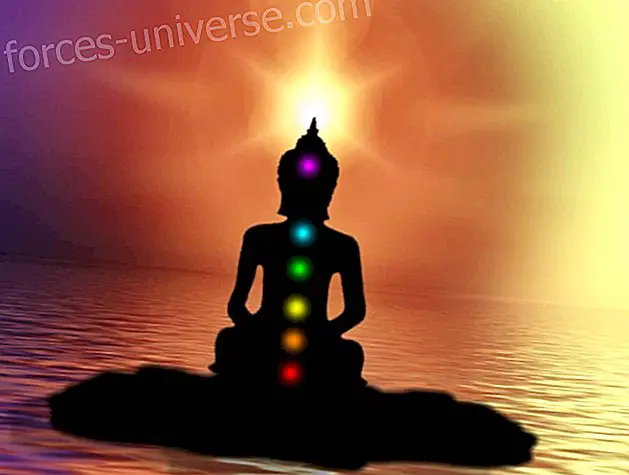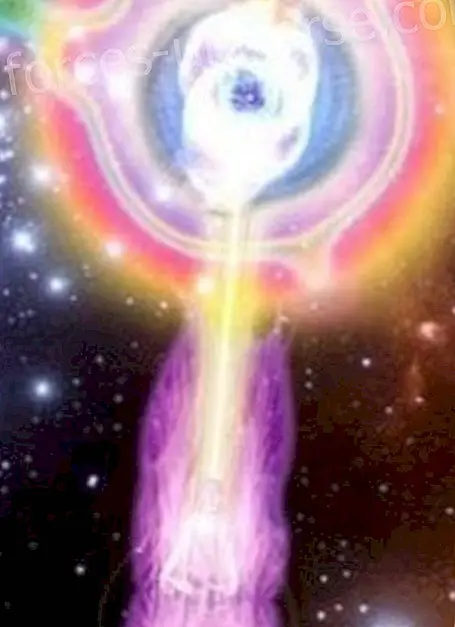As the name itself indicates, Numerology is the science that deals with numbers, the way they affect our lives and the way we can harness their influence to reach our full potential in this life. Numerology therefore has applications, from choosing a specific telephone number for a business that we started to select the right name for the first child, which brings him luck and fortune.

Numerology offers us enormous advantages to analyze a deep knowledge of personality. This millenary science is located within the so-called "hermetic" sciences, whose object of study is Man himself, and unlike other sciences, it also covers the knowledge of his future, his perspectives on the future of life.
Numerology only requires the understanding of another basic science, Arithmetic, and the laws that govern it and which in turn describe the Universe as a whole. This arcane science began with the Gnostics, the Hebrews and Kabbalists, who knew how to use numbers and their deep meaning to reach the deep notions of Alchemy, which was revealed as a deep and symbolic, deeply philosophical magical art that uses the Letters of the alphabet and their corresponding numbers to decipher the hidden meaning of the Holy Scriptures. And even before, the numbers have been part of the history of Men. There are already ways to measure and tell in ancient paleolithic engravings, in menhirs, in prehistoric caves, in China Egypt, Greece.
They appear in sacred texts, such as the Bible, or in Kabbalistic manuscripts. Even God uses numbers to define the days needed for Creation. However, if the paternity of Numerology had to be assigned, Pythagoras would undoubtedly be the chosen one.
This great philosopher and the school he created said: "all things are assimilated by numbers, " argued that the harmonies of music and spheres, the movements of the Sun and the Moon and the stars were determined by magic figures, which also had great importance in the profane world, since they were the basis of the archetectonic proportions, of beauty.
Each number is not merely a symbol, but each one contains its own magic, coming from the collective unconscious that gives them meaning.
However, there is an obstacle that until recently hindered the consultation of this numerical Oracle: the conversion of the letters into their corresponding number, since the alphabet in which the Numerology was created does not correspond to ours, but to the Greek or Hebrew
And here also the confusion related to Numerology begins, because how many letters does our alphabet really have? Are the ch, ll or ñ letters with their own meaning or combination of others? Even today the wise continue to study these and other issues related to the Symbolism of Numbers.
The reality is that we are not born on a certain date, in a specific place, at a specific time or in a particular family by chance. These fundamental facts will condition our whole life and our future, but it doesn't end here. Throughout our existence, numbers will continue to condition it, even in the behavior and development of our soul.

Let us now analyze the symbolism of the numbers from 1 to 10, according to the Pythagorean teachings:
ONE: It is the symbol of indivisible unity, continuity and stability; the cosmic and immaterial center, odd, creator, initiator and pioneer. Hence, the male is associated as an active generating power and indicates creation, impulse and activity.
TWO: It does not generate any form and in fact it is not a number, but the principle of parity, the symbol of opposition, conflict, and reflection. It is duality as opposed to unity, passivity as opposed to activity; It is the first even number and, as such, feminine and complementary to the odd and masculine generating principle, thus enabling continuity and multiplicity. It is the point that moves giving rise to the line, marking its beginning and its end; in time and space it indicates the beginning of the realization, which in life indicates direction and destiny and in the objects determines the symmetry, reflection of work and beauty.
The realm of duality is universal and makes everything ambivalent, that polarity exists in everything, that evil is opposed to good, to darkness, to matter, and to limit the limitless. But in signifying the first of the material nuclei, nature as opposed to the creator, it also implies imperfection in the face of perfection, and therefore, deep down, the dissatisfaction that drives forward.
THREE: It is the ternary in which the tension of the opposites, between even and odd, is resolved by giving rise to a new odd; it is the symbol of the generation from the union between two complementary, of the male and the female to give rise to the son; spirituality as a complement of body and soul; it is the line that moves over its point of origin to give birth to the simplest of all the figures: the triangle, and with it all the flat figures. Therefore, it is capable of eternally reproducing the same structures. The three closes a cycle, a first totality that is no more than another one, another odd one in which the next cycle will begin; As Plato says in Timaeus: "It is impossible to combine the set of two things well without a third, you need a loop that unites them."
FOUR: It is both the second even number and the return to the fundamental unit at a higher level, as evidenced by its mystical reduction in which
1 + 2 + 3 + 4 = 10 = 1 + 0 = 1
It symbolizes the power of excellence, because in it, the complete unity to the ternary by joining it giving rise to the cross and the square and, more importantly, to the four dimensions of space, that is, the material and corporeal determination . They are the four elementary principles, Fire, Earth, Air and Water, that make up the Universe; the four cardinal points, the four pillars of the Universe, the four phases of the Moon and all the infinity of quaternaries that serve to define a superior unit.
Plato said that the ternary is the number of the idea and the quaternary is the realization of the idea. For this reason, in the sevenfold organization of the directions of space, the ternary is located in the vertical (three worlds or three levels) while the quaternary is arranged horizontally, in the world of the manifested.
FIVE: With the five a new dimension appears: time, which also amounts to the animation of matter through life by granting continuity and succession. The Greeks called it the nuptial number because of its intermediate position between the first four and the last four numbers of the decade. It symbolizes man as a complete and intermediary entity between the lower world and the divine world. It is the man locked in the revealing pentagram of the divine proportion, with its four members ruled by the head, and the four fingers ruled by the thumb. But also, because of its intermediary nature, it can be a destructive number of the temporary, mutable and perishable.
It is the first number that manifests all the possibilities of the Universe, and therefore, the Pythagoreans had as a sign to recognize the five-pointed star. Finally, when represented by a square with a dot in its center, it represents the material totality (the quaternary) and its essence.
SIX: Represented by the six-pointed star, it shows the balance between two linked and opposite triangles (Fire and Water); That is why it decomposes as 3 + 3, as a conjunction of the three with itself. It is the opposition between the Creator and his creation in an indefinite balance, opposition that does not necessarily imply contradiction, but is the source of all ambivalences. For the Pythagoreans it is the perfect number, since the product of the numbers that compose it is equal to its sum:
1 + 2 + 3 = 6; y 1 x 2 x 3 = 6
SEVEN: We saw when studying the four that his return to unity meant the realization of the unity of the world. Now upon reaching seven, what is done is the universal unity. This relationship with the four, symbol of the Earth, causes the seven wandering stars or planets to be attributed. When it comes from 6 + 1 it is represented by a six-pointed star with a point in its center, it is the balance tending to the interiority, revealing the mystery of the circulation of the forces of nature.
EIGHT: It is the first civic number (apart from 1), and in it the volume is manifested. It symbolizes spiritual regeneration and mediation between the natural and divine order, by itself intermediary between the circle (symbol of eternity) and the square (symbol of materiality ), while stabilization in one or another state.
It reflects a harmony, but also a change in level, since being an even and passive number, it can always be divided and subdivided into equal numbers:
8 = 4 + 4 = 2 + 2 + 2 + 2 + 2 = 1 + 1 + 1 + 1 + 1 + 1 + 1 + 1
Hence, another of its meanings is the cosmic balance of equity and justice.
NINE: In creation, the worlds are three: heaven, earth and hell, and each world is symbolized by a triad; for that reason the nine is the number that closes the third cycle from the unit, and with it, the creation.
Perménides says that nine is the number of absolute things, and in this same line, we must state that the nine muses represented the totality of human knowledge. In addition it is also the number of perfection, because the human fetus is born at the ninth month, already totally perfect.
Porfirio, in his Enneadas (set of nine) forms by 54 treaties, says: "I have had the joy of finding the product of the perfect number, by the nine". And in this numerological structure, he tries to symbolize his total, cosmic, human and theological vision. After the emanation of the One, with the return to the One the cycle of the Universe is completed.
TEN: It has the sense of the totality, of end, of return to the unit finalizing the cycle of the first nine numbers. For the Pythagoreans it is the holy tetraktys, the most sacred of all numbers to symbolize the universal creation, source and root of eternal nature; and if everything derives from it, everything returns to it. It is therefore an image of the totality in motion.
Taken from: Little Universe






